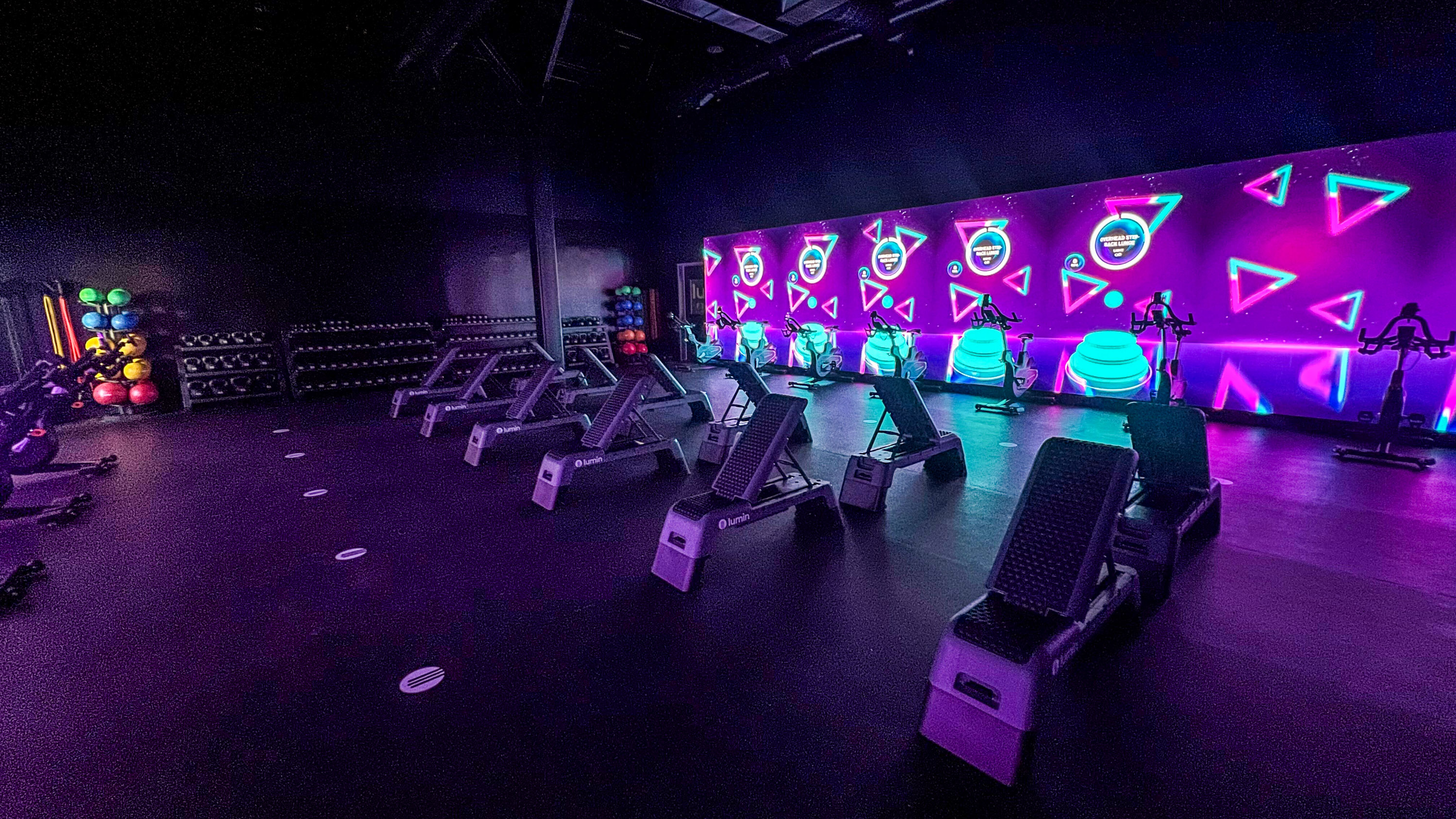They are also confident their system of AI trainers will encourage people to start working out even if they were previously put off gyms. The idea is to offer a more personalized approach to fitness that cuts out interactions with expert human trainers who could leave them feeling intimidated or unmotivated.
The darkened studio space can accommodate up to 14 people at once, either completing a solo workout program or participating in a high-intensity functional training class where a group performs movements such as squats, dumbbell presses, and sit-ups.
Each member works out within a designated station facing wall-to-wall LED screens. These tall screens mask sensors that track both the motions of the exerciser and the gym’s specially built equipment, including dumbbells, medicine balls, and skipping ropes, using a combination of algorithms and machine-learning models.
Once members arrive for a workout, they’re given the opportunity to pick their AI coach through the gym’s smartphone app. The choice depends on whether they feel more motivated by a male or female voice and a stricter, more cheerful, or laid-back demeanor, although they can switch their coach at any point. The trainers’ audio advice is delivered over headphones and accompanied by the member’s choice of music, such as rock or country.

Although each class at the Las Colinas studio is currently observed by a fitness professional, that supervisor doesn’t need to be a trainer, says Brandon Bean, cofounder of Lumin Fitness. “We liken it to being more like an airline attendant than an actual coach,” he says. “You want someone there if something goes wrong, but the AI trainer is the one giving form feedback, doing the motivation, and explaining how to do the movements.”
During warmup and cool-down sections before and after workouts, the LED screens display a faceless humanoid figure completing the motions as a visual aid to help the client follow along. Once the workout has begun, the screens depict simple motivational games, encouraging participants to fill up a virtual basket of balls by completing a sit-up, for example, or building a virtual block tower every time they finish a burpee.
This gamified approach to fitness could prove motivating for some people, says Andy Lane, a professor of sport psychology at the University of Wolverhampton in the UK. “It’s about providing enough reinforcement to light up their dopamine receptors and bosh, the person wants to do it again,” he says. “If you game it to make people feel good about their achievements as they progress, that’s good.”